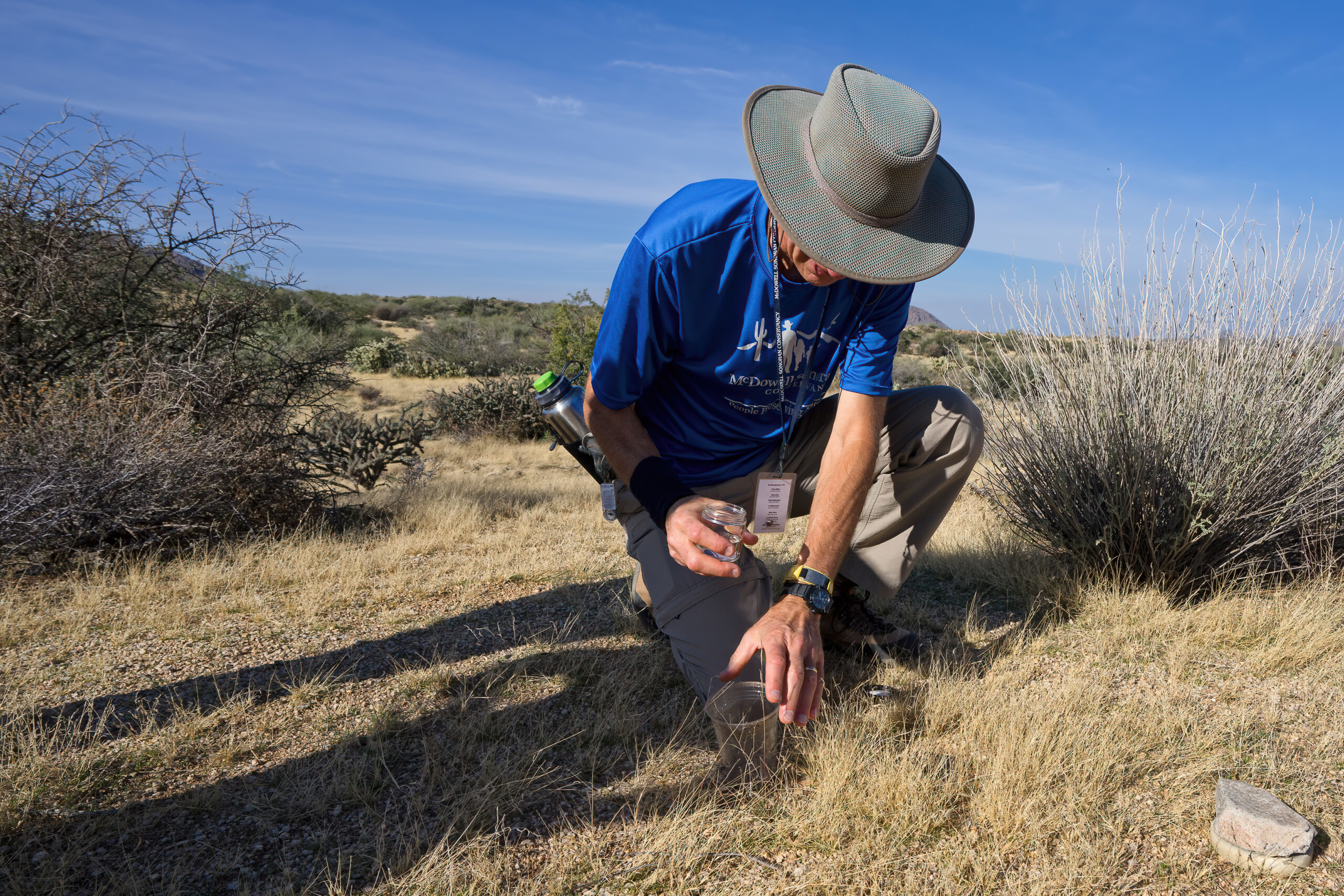The Founding of the Parsons Field Institute
The original conception in 2005 for the Parsons Field Institute was focused on ecotourism – combining talks about the natural and human history of the land with guided hikes in the nascent Preserve – as a source of funds for the McDowell Sonoran Conservancy. At that time, the Conservancy, led by Executive Director Carla, was primarily focused on advocacy to support growing the Preserve and lacked the capacity to consider this additional initiative.
Over the next few years, however, the Preserve continued to grow, yet there was no data to guide and support the Conservancy staff’s management decisions. The lack of solid data also led to challenges in dealing with anecdotal reports. For example, there were claims made to Preserve staff and even to Scottsdale City Council that trail use was decimating the Preserve’s deer population. People were also concerned that trail quotas might be needed to avoid “loving the Preserve to death” as visitation grew. In the absence of any data about the actual deer population and its changes over time and the impact of visitation on the Preserve environment, it was hard for Conservancy staff to address such concerns.
At the same time, Stewards demonstrated that we could conduct credible field research with good guidance, training and leadership. Our first organized Steward science project in the Preserve, the Lost Dog Overlook geology project in 2008 – 2009, produced noteworthy results that revised the understanding of the local geology, summarized in the Conservancy’s first peer-reviewed, published paper. This project established an approach to Steward-based citizen science, confirmed strong Steward interest in such work and demonstrated that Stewards could do field research. They could also help analyze, map and report the results.
Based on the growing need for good data and this citizen science experience, the Field Institute concept was changed in 2010 to focus on applied research to guide and support Preserve management decisions. Conservancy leadership, including Executive Director Ruthie Carll, supported this approach and we took advantage of the Conservancy’s expanded development capacity to leverage funding from a private source into a major grant from the Nina Mason Pulliam Charitable Trust. The grant supported a comprehensive flora/fauna survey to establish what plants and animals were in the Preserve for us to conserve.
During 2010, this activity and the associated funding culminated in hiring a full-time Conservancy staff member, Lesley Forst, to coordinate what was now officially called the Field Institute. The mission of the newly formed Field Institute was to conduct ecological research through partnerships and citizen science to inform management of the ecological resources of the Preserve and the Sonoran Desert, to contribute to broader scientific knowledge and to inspire stewardship of the desert.
Also during 2010, the Conservancy established the program-focused Steward organization. This provided a model for organizing Stewards around continuing functions. As Field Institute projects expanded in number, got more complex and involved more partner organizations through 2010 and 2011, increasing demands were placed on the sole Field Institute staff person beyond leading field work.
Meanwhile, many Stewards were involved in multiple citizen science projects under the auspices of the Field Institute. As they gained experience, Steward project structure, management and leadership began to emerge naturally. This clearly was beneficial in leveraging the time of Field Institute staff and the scientists from partner organizations who led much of the research. In 2013, the Field Institute manager, Melanie Tluczek, Conservancy Executive Director Mike Nolan and the leadership of the Steward organization agreed to start a formal citizen science Steward program as part of the Field Institute.
Today, the unique strengths of the Conservancy’s Citizen Science program flow from this history. Continually growing Steward citizen science expertise and capability allow for reduced direct supervision, increased autonomy and increased ability to handle more complex field and analytical work. This greatly leverages the time of Field Institute staff and partner scientists, and provides Preserve staff with the benefits of high-quality research relevant to Preserve management. The Field Institute and the associated Citizen Science Steward program also serve as models for how other small conservancies with limited staff resources can utilize volunteers effectively to create robust research capabilities.
Executive Director Justin Owen and the Conservancy development staff obtained substantial new financial support for the Field Institute from the Bob and Renee Parsons Foundation in 2018. This allowed the newly-named Parsons Field Institute to hire Associate Director Helen Rowe, manager Tiffany Sprague and more recently Research Lead Mary Fastiggi.
Expanded staff and a constantly growing roster of experienced citizen scientists have enabled the Parsons Field Institute to substantially expand its work and scope and partner with other conservation organizations across central Arizona. The work of the Parsons Field Institute has led to a number of published papers, allowing other organizations working in arid regions globally to use our work.
We have created the most robust research center of any small conservancy in the region. This is possible because of strong support from the Conservancy staff and board, the staff at the Parsons Field Institute and the largest and most capable citizen science program around.


